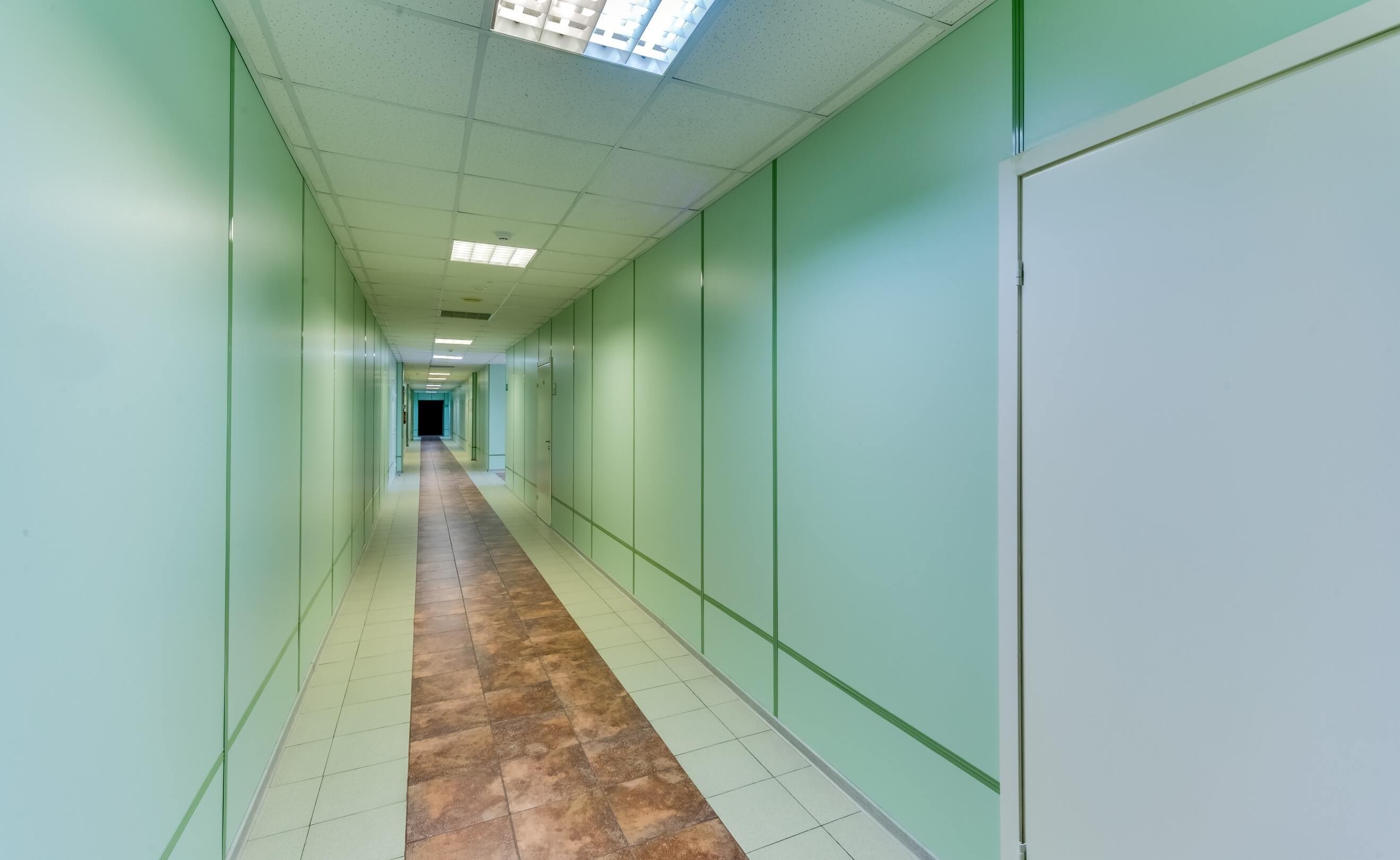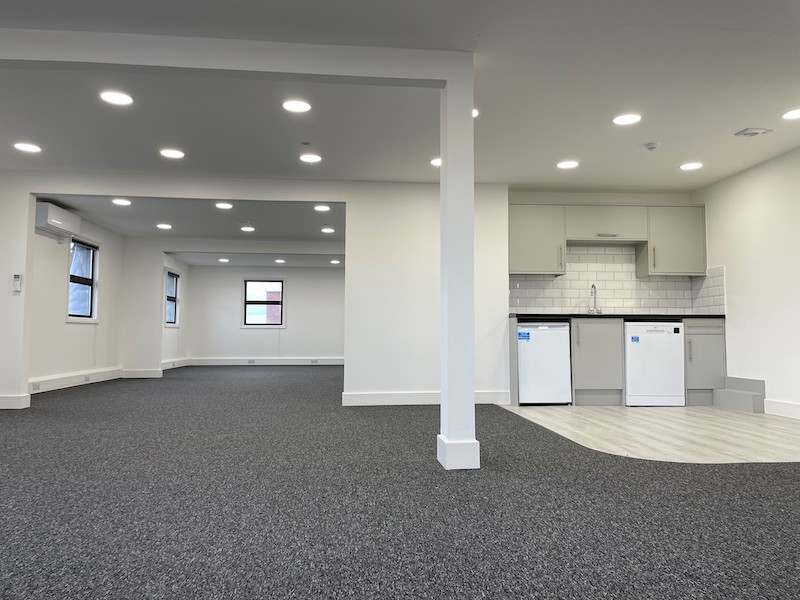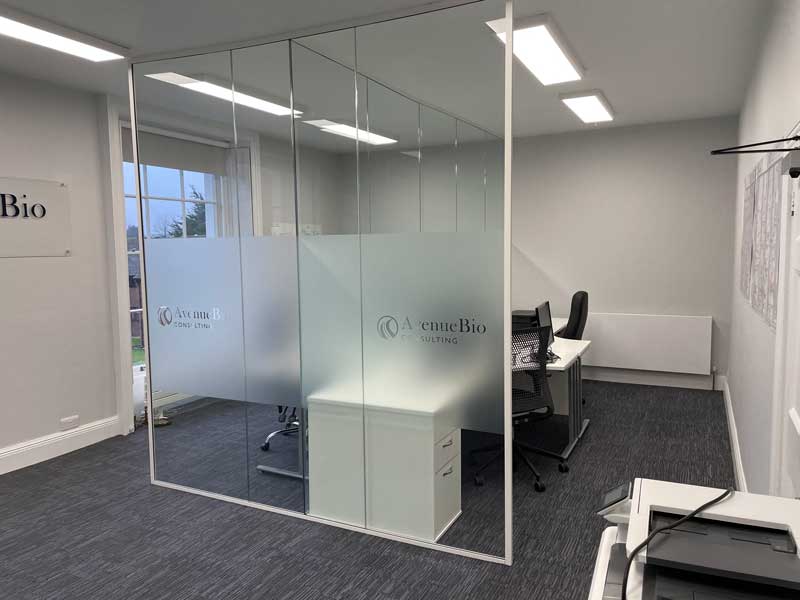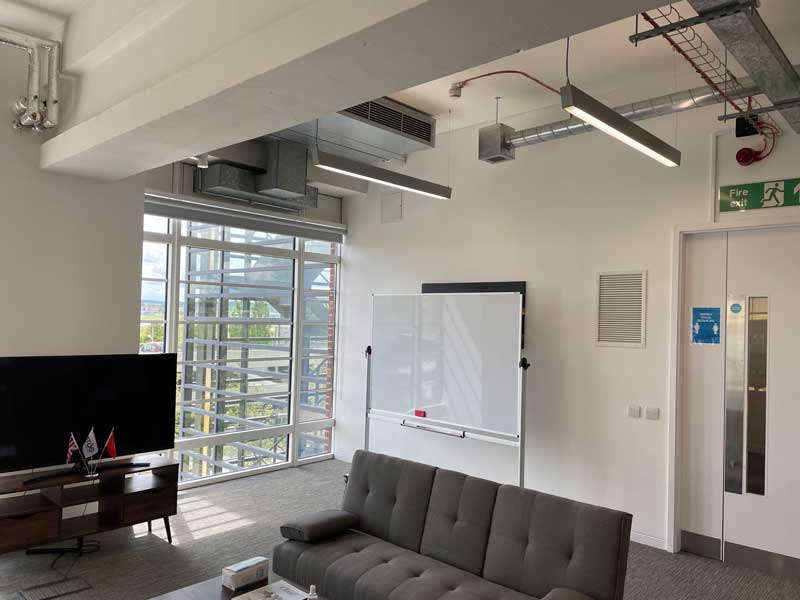The Many Benefits of Acoustic Laminated Glass
Noise pollution isn’t just a nuisance, or a minor distraction in a home or office. It’s well known that being exposed to loud or prolonged noise is a leading cause of stress and mental health issues. As sound levels reach unacceptable levels, we experience a surge of adrenaline and a rise in blood pressure. This can lead to a range of medical complications, including hypertension and cardiovascular disease, cognitive impairment, tinnitus and sleep disturbance.
If you’re renovating a domestic or commercial property and are located in an area with high environmental noise – from traffic or a railway line, or an airport, for example – then incorporating the best sound protection should be one of your top priorities. In this scenario, normal double- or even triple-glazing just isn’t enough. To help protect those living or working within the premises, you should incorporate acoustic glass.
How Loud is too Loud?
In order to gauge what represents a dangerous noise level, you need to understand how sound is measured in the first place. Essentially, sound is measured in decibels. This can range from 0 dB – total silence – up to an ear splitting 180 dB – the sound of a gunshot.
When it comes to dangerous sound levels, this doesn’t just necessarily depend on the decibel level, but also the exposure time. Sound levels of above 85 decibels (dB) are considered to be harmful to human ears, and an 8-hour exposure can lead to permanent hearing loss. Noise levels of 120 dB – the equivalent of a plane taking off – can lead to hearing loss in as little as 30 seconds. Given that traffic noise, the main noise pollutant for the majority of commercial buildings, can reach 70-80 dB, it’s easy to see why it’s important to control unwanted noise permeating into your commercial or domestic premises.
What is Acoustic Glass?
Acoustic glass is laminated glass that’s specifically designed to reduce sound intrusion. Resin-based plastic, polyvinyl butyral (PVB) is sandwiched between the laminates, doubling their strength and sound insulating properties. The acoustic glass essentially reduces the sound wave’s energy, and significant noise reductions can be achieved.
Acoustic glass comes in a wide range of thicknesses, depending on the amount of sound proofing required. Not only is there specialist acoustic glass for external windows, but acoustic glass can also be utilised for internal glass partition walls, providing fantastic sound proofing. This ensures privacy in individual offices, boardrooms and meeting rooms, and also minimises disturbance in outlying corridors and open plan spaces.
How much Noise Reduction can be Achieved?
Acoustic glass provides incredibly powerful noise reduction. In order to understand how significant this reduction can be, you need to know how the decibel scale works. Basically, the decibel scale is logarithmic, so every 3dB increase is a doubling of sound intensity, and a 10 dB increase represents a sound that’s perceived to be twice as loud.
The sound reduction properties of acoustic glass are measured using a sound reduction index, or R value. The higher the index, the greater the reduction. Acoustic glass with an R value of 30 will reduce the noise level by 30 dB, while really good acoustic glass will have an R value of greater than 50. This could reduce excessive motorway noise levels of 80+ dB to a far more comfortable 30 dB, or a barking dog from an annoying 70 dB to a far more manageable 20 dB (to give you an idea of how much the noise can be reduced, this takes the sound down to that of a ticking watch!)
However, not all acoustic glass is the same. It’s absorption properties will depend on a variety of parameters, including how thick the glass is, whether the window is double- or triple-glazed and the size of the window (larger windows will obviously let in more noise).
Glass is only Part of the Solution
It’s really important to understand that installing acoustic glass is only part of the solution. In order to make sure the glass achieves its potential, all air gaps must be sealed. So the glazing must be mounted in a well-insulated frame. In addition, in larger construction projects, sound proofing using acoustic glass should be considered as part of the sound integrity of the whole structure – complementing the properties of all building materials and interior furnishings. This includes external building fabrics, and internal structures such as ceilings, flooring, air conditioning ducts, interior wall construction and all soft furnishings. This is where a multi-disciplinary team of architects, engineers, builders and designers can all come together to ensure a building has the optimal acoustic environment.
Other Benefits of Acoustic Glass
Noise damping is only one of the ways in which acoustic glass can improve your living or working environment. The specialist glazing also conveys a number of other benefits, including:
Safety
Laminated acoustic glass provides a superior safety profile, compared with both standard and tempered glass. As acoustic glass contains PVB, if it breaks, the glass shatters into small pieces, rather than breaking into larger dangerous shards. For this reason, it’s also really popular with car manufacturers. In fact, this exact property is how laminated glass was discovered in the first place. In 1903, the French chemist Edouard Benedictus accidentally dropped a flask coated in the plastic cellulose nitrate. He noted that the glass didn’t break, it shattered; this led to a patent being filed in 1909 and the rest, as they say, is history.
Health
Obviously, we’ve covered how acoustic glass dampens nerve-shattering decibel levels, protecting our hearing and preventing any subsequent medical issues. However, as laminated acoustic glass can also block 99% of ultraviolet light transmission, acoustic glass also offers protection from harmful sun exposure.
Security
Laminated glass can be constructed in all manner of thicknesses and in multiple layers. This is especially useful from a security standpoint for protecting buildings and cars. Specially toughened laminated glass is used by security services and the armed forces, for bullet-proofing vehicles.
So there you have it, everything and more you need to know about acoustic glass and the many benefits it can lend to buildings and automobiles. If you’re looking for solutions to your commercial refurbishment needs, then please don’t hesitate to get in touch with us here at Sandhurst Interiors. We work across a wide range of projects – from a single office to whole buildings and have experience in both the public and private sectors. We’re not just about the internal furnishings, we can also help address environmental constraints and help ensure your building renovation or improvement meets your needs for many years to come.




